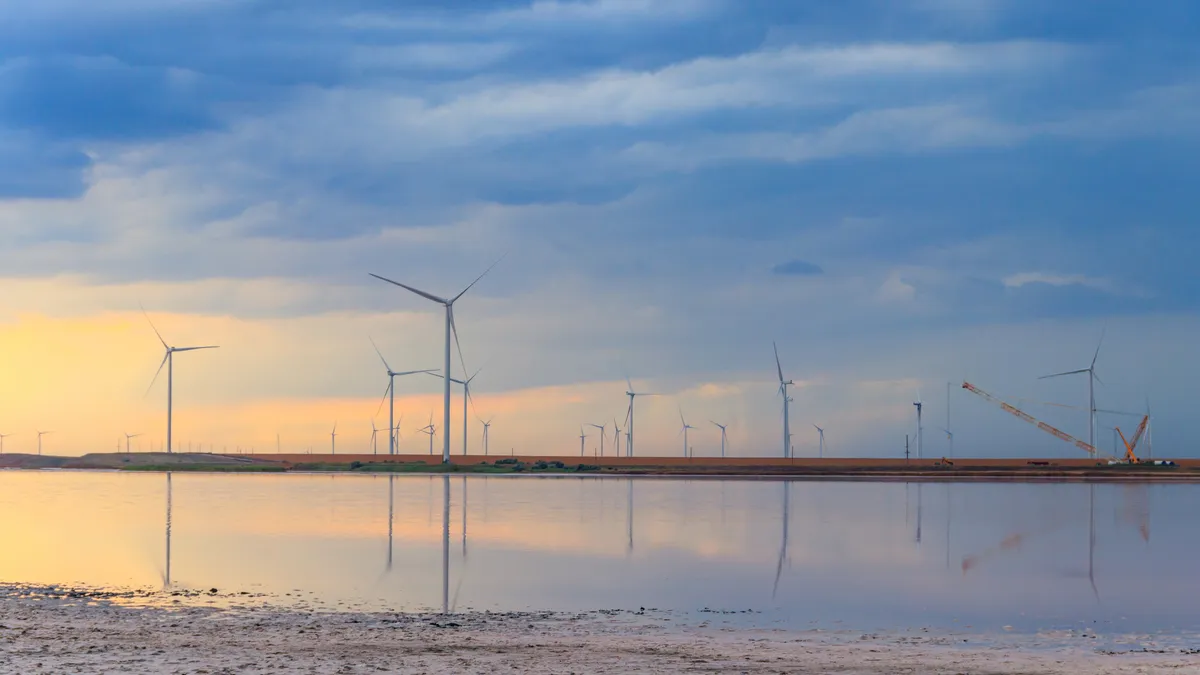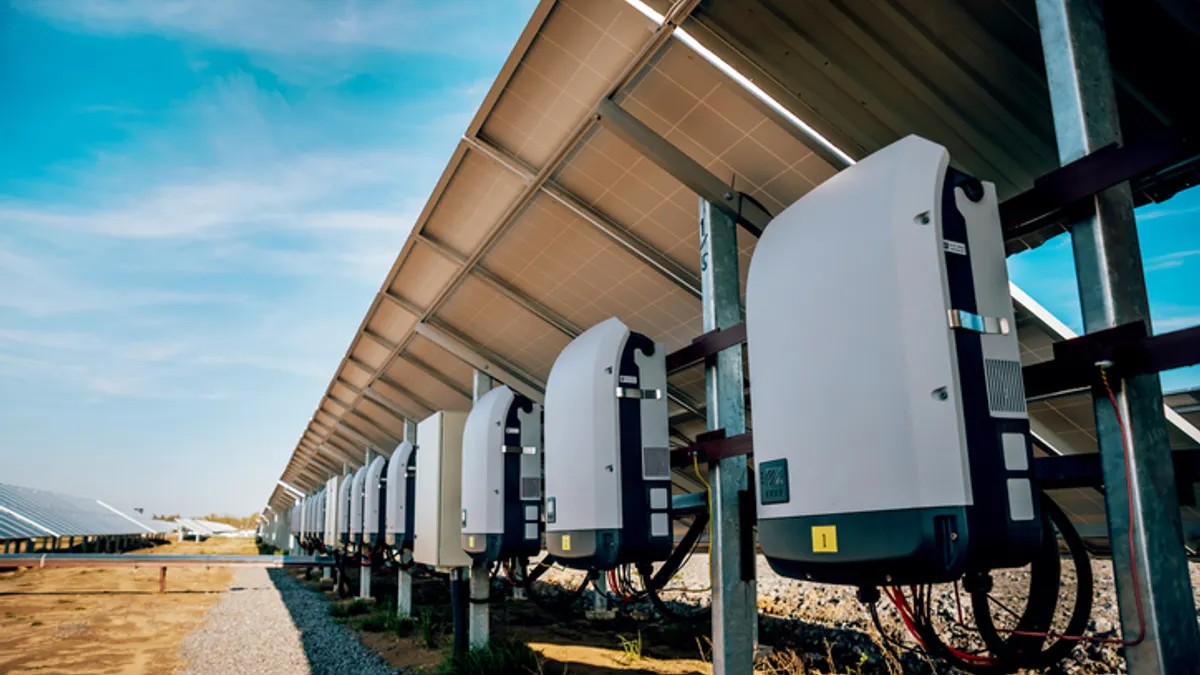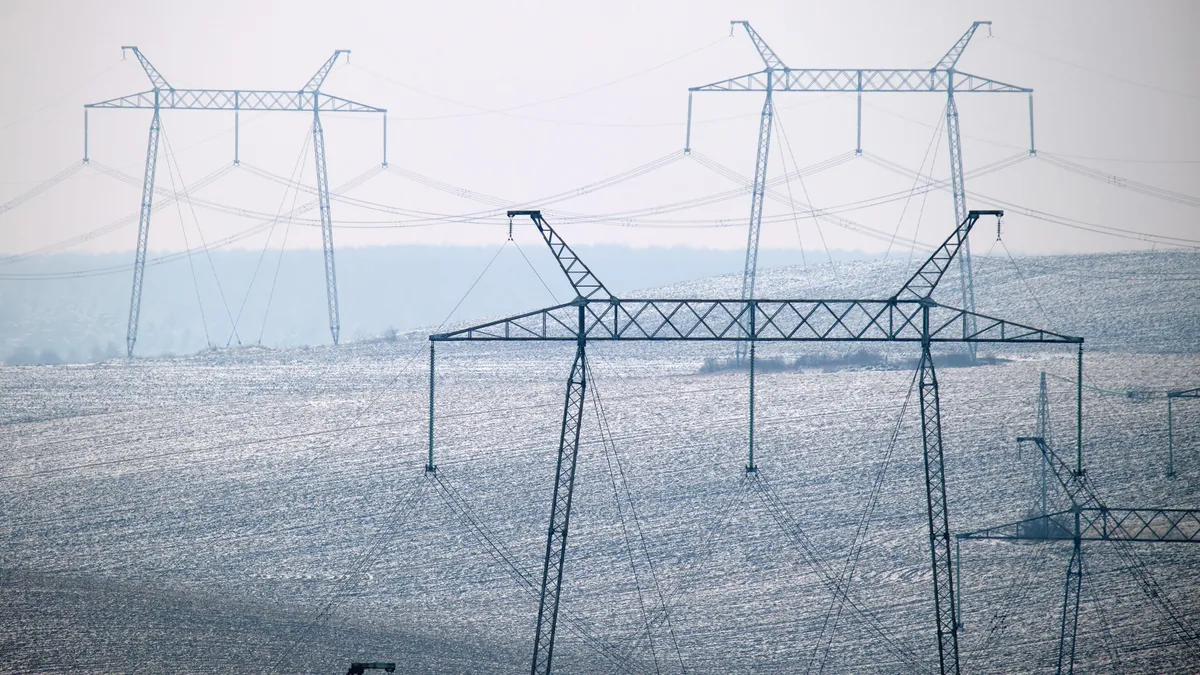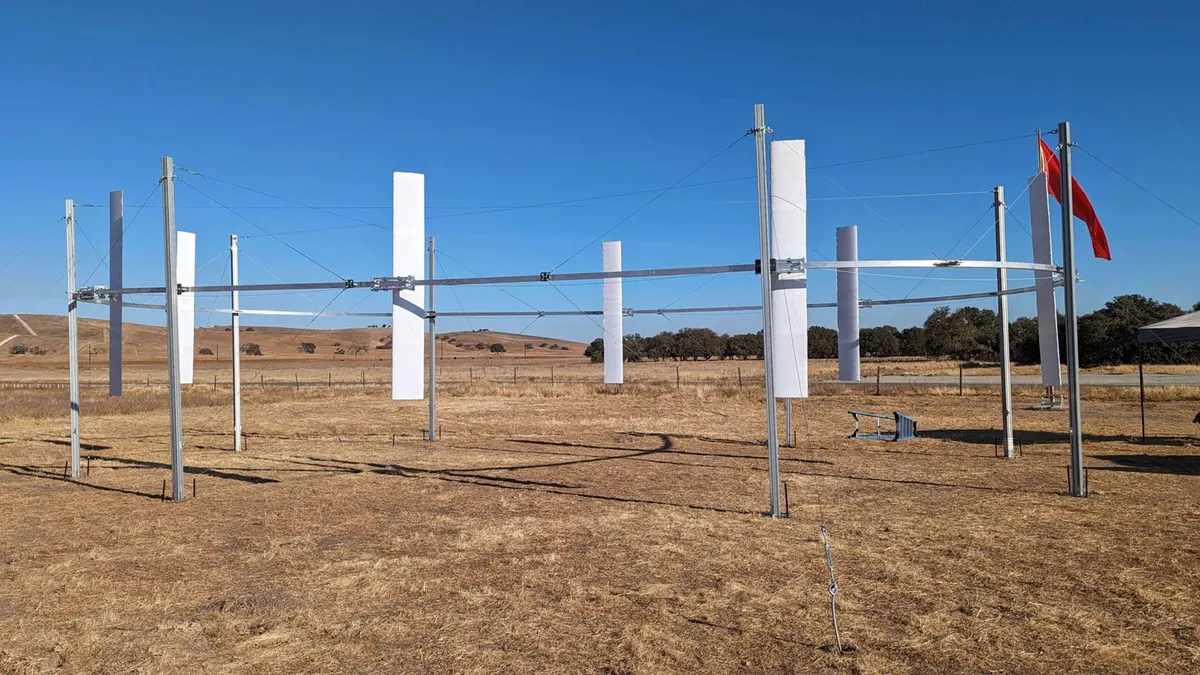A report from Columbia University’s Sabin Center for Climate Change Law aims to identify and debunk 33 misconceptions about wind energy, solar energy and electric vehicles, two of the authors said in a Wednesday release.
The report’s authors say they “reviewed social-media groups and websites created to oppose renewable energy projects or policies, as well as existing coverage about misinformation” to find claims to rebut, then used peer reviewed academic literature and government publications to find information disputing those claims.
“The Sabin Center’s new analysis highlights the fact that clean energy projects are often the most affordable sources of new electricity on the U.S. grid; they are reliable and homegrown, increasing our energy security and safety; and they are pollution-free, improving our environment and the air our families breathe,” Ray Long, CEO of The American Council on Renewable Energy, told Utility Dive. “Don’t be fooled by the misinformation .... Just because they say it, doesn’t mean it’s true.”
Below are five of the claims the authors identified with a brief summary of the report’s rebuttal to each.
“Toxic heavy metals, such as lead and cadmium, leach out from solar panels and pose a threat to human health.”
While 40% of solar panels in the U.S. do contain the highly toxic metal cadmium, as cadmium telluride panels are frequently deployed at utility-scale solar facilities, the authors point out that cadmium when combined with tellurium is “non-volatile, non-soluble in water, and has 1/100th the toxicity of free cadmium.”
In addition, materials inside of a solar panel are encased in tempered glass. This has contributed to the difficulty of recycling those materials — a problem that cadmium telluride panel manufacturer First Solar is working with the University of Kansas and Idaho National Laboratory to solve.
“Offshore wind development is harmful to whales and other marine life.”
The report authors cite the National Oceanic and Atmospheric Administration’s finding that no link has been found between offshore wind development and whale deaths, and when human activity causes deaths of critically endangered North Atlantic right whales, vessel strikes are at fault 75% of the time.
“Moreover, any impacts to the North Atlantic right whale can be avoided or greatly minimized through proper planning,” the report says.
The authors cite a 2019 agreement among the developers of the 800-MW Vineyard Wind 1 project, Avangrid and Copenhagen Infrastructure Partners, and three environmental groups — the National Wildlife Federation, the Conservation Law Foundation and the Natural Resources Defense Council — as an example of such planning.
That agreement placed seasonal restrictions on pile-driving during development to limit or eliminate construction noise when right whales are likely to be present, and placed restrictions on vessel speeds during the operational phase to reduce the risk of vessel strikes.
“Solar energy is more expensive than fossil fuels and completely dependent on subsidies.”
The report cites the International Energy Agency’s 2020 World Energy Outlook’s finding that photovoltaic solar power had become “the cheapest source of new electricity generation in most parts of the world,” and “[f]or projects with low cost financing that tap high quality resources, solar PV is now the cheapest source of electricity in history.”
The authors also cite a 2023 report from financial consulting firm Lazard, which found that solar energy “compares favorably” to energy from gas combined cycle power plants in terms of mean unsubsidized levelized cost – solar is currently at $60/MWh, while gas combined cycle is at $70/MWh.
“The mean unsubsidized levelized cost of coal is $117/MWh, and the mean unsubsidized levelized cost of gas peaking is $168/MWh,” the report says.
While both solar and fossil fuel generation benefit from subsidies, solar energy is currently receiving more total subsidies than fossil fuels. However, the authors note that a 2022 report from consulting firm ICF International found the Inflation Reduction Act “is predicted to reduce the subsidized [levelized cost of electricity] for solar by 20%–35% by 2030.”
“We do not have sufficient mineral resources for large-scale solar development.”
“A 2023 study that examined 75 emissions-reduction scenarios concluded that global reserves of critical materials are likely adequate to meet future demand for electricity generation infrastructure,” the report says, citing a report from The Breakthrough Institute.
The authors acknowledge that “production rates for many critical materials will need to grow substantially,” but note that the U.S. Department of the Interior has also concluded that “it is not anticipated that there will be any long term material constraints that would prevent the development of a significant amount of energy from photoelectric cells.”
The report cites provisions included in the IRA and Infrastructure Investment and Jobs Act that aim to identify and develop domestic sources of rare earth minerals.
“Wind turbines frequently fall over, and blades or other components easily break off, threatening human health and safety.”
“Turbine collapse or breakage are extremely rare, and utility-scale wind turbines are fitted with safety mechanisms to survive extreme weather conditions, such as hurricanes,” the report says.
The authors note that according to the Department of Energy, although turbine detachment was a “concern in the early years of the wind industry,” the risk has become “virtually nonexistent” due to improvements in engineering and the use of sensors.
“[DOE] has further reported that ‘catastrophic wind turbine failures . . . are considered rare events with fewer than 40 incidents identified in the modern turbine fleet of more than 40,000 turbines installed in the United States as of 2014,’” the report says.
The other 28 rebuttals include responses to claims that electric vehicles are impractical, that offshore wind power is too expensive, and that renewable energy will negatively impact the U.S. job market.






















